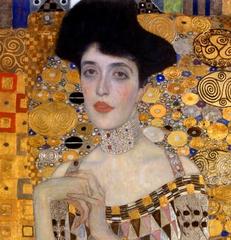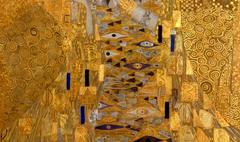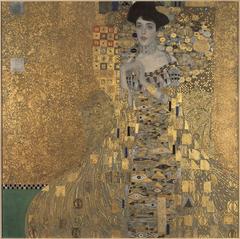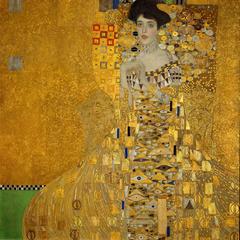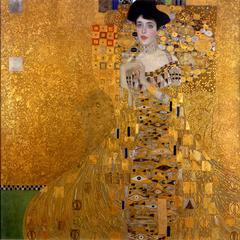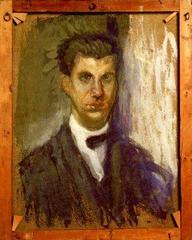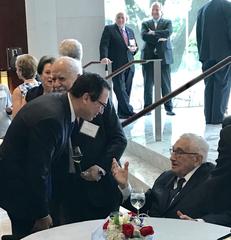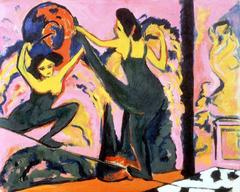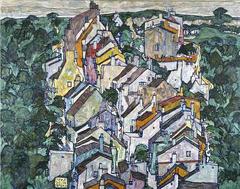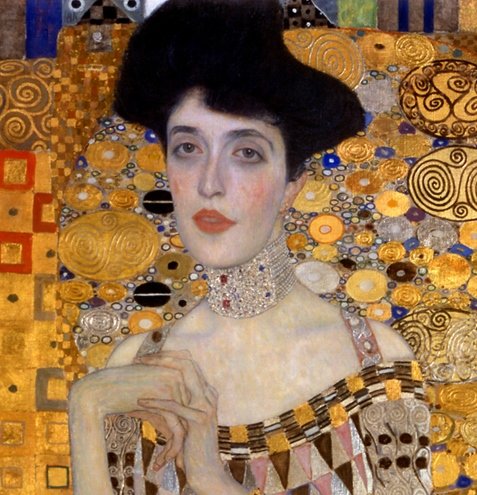
Neue Galerie New York City: Visiting Hours, Tickets, and Historical Sites Guide
Date: 14/06/2025
Introduction: Discovering the Neue Galerie’s Legacy
Situated on Manhattan’s iconic Museum Mile, the Neue Galerie New York stands as a distinguished destination for admirers of early 20th-century German and Austrian art. Founded in 2001 by art dealer Serge Sabarsky and philanthropist Ronald S. Lauder, the museum is dedicated to preserving and celebrating the pivotal artistic movements that shaped modern Europe, including the Vienna Secession, German Expressionism, Bauhaus, and New Objectivity. Housed in the historic William Starr Miller House—a meticulously restored Louis XIII/Beaux-Arts mansion—the Neue Galerie immerses visitors in both artistic brilliance and architectural splendor. Its centerpiece, Gustav Klimt’s “Portrait of Adele Bloch-Bauer I” (“Woman in Gold”), symbolizes both the museum’s commitment to provenance research and the enduring cultural significance of its collection.
Beyond its galleries, the museum offers authentic Viennese cuisine at Café Sabarsky, insightful guided tours, and robust educational programs. Its strategic location near major New York historical sites such as the Metropolitan Museum of Art and Central Park makes it an essential stop for cultural exploration. Whether you’re an art scholar or a casual visitor, the Neue Galerie promises an enriching journey into the heart of German and Austrian modernism.
For the latest details on visiting hours, tickets, and exhibitions, consult the official Neue Galerie website and trusted platforms like Klook.
Table of Contents
- Introduction
- History and Founding Vision
- Architectural Heritage
- Collection Highlights
- Exhibition Milestones
- Visiting Hours & Tickets
- Accessibility & Visitor Services
- Travel Tips & Nearby Attractions
- Educational Programs
- Leadership & Community Impact
- Recent Developments
- FAQs
- Summary and Recommendations
- References
History and Founding Vision
The Neue Galerie was conceived by Serge Sabarsky, an Austrian émigré and expert in German Expressionism, and Ronald S. Lauder, a passionate collector and heir to the Estée Lauder fortune. Their shared vision was to create an institution devoted exclusively to German and Austrian art from 1890 to 1940 (Neue Galerie official site). After Sabarsky’s death in 1996, Lauder saw the project through, and the museum opened its doors in 2001, combining their personal collections into the core holdings (Time Out).
The museum’s name is a nod to its European predecessor, the original Neue Galerie in Vienna, founded by Otto Kallir in 1923. This transatlantic legacy underscores the institution’s mission to bridge cultures and foster understanding of Central European modernism (Google Arts & Culture).
Architectural Heritage
The museum occupies the William Starr Miller House, a grand Beaux-Arts mansion completed in 1914 and designed by Carrère and Hastings. Its conversion into a museum was led by Selldorf Architects, who preserved its ornate interiors while adapting the building for galleries, a café, and public spaces. The mansion’s architecture provides an elegant, historic backdrop for the museum’s modernist collections (Klook).
Collection Highlights
The Neue Galerie’s collection is divided into two main areas: Austrian art and design (with a focus on the Vienna Secession and Wiener Werkstätte) and German art (including Expressionism, Bauhaus, and Neue Sachlichkeit/New Objectivity). Notable artists represented include:
- Gustav Klimt: “Portrait of Adele Bloch-Bauer I” (1907), “Forester’s House in Weissenbach II (Garden)” (1914), “The Black Feathered Hat” (1910)
- Egon Schiele: “Town Among Greenery (The Old City III)” (1917), “Stein on the Danube” (1913)
- Oskar Kokoschka: “Martha Hirsch” (1909)
- Max Beckmann: “Self-Portrait with Horn” (1938)
- Otto Dix: “Reclining Woman on a Leopard Skin” (1927)
- George Grosz, Ernst Ludwig Kirchner, Paul Klee
Decorative arts include works by Josef Hoffmann, Koloman Moser, Dagobert Peche, and Wiener Werkstätte furnishings, exemplifying the Viennese ideal of Gesamtkunstwerk—the total work of art (Google Arts & Culture).
Exhibition Milestones
The museum is renowned for its dynamic special exhibitions, often exploring the intersections of art, politics, and society. Notable past exhibitions include:
- “Degenerate Art: The Attack on Modern Art in Nazi Germany, 1937” (2014)
- “Berlin Metropolis: 1918–1933” (2015)
- “Before the Fall: German and Austrian Art of the 1930s” (2018)
- “Neue Sachlichkeit / New Objectivity” (2025 centennial, featuring over 140 works by 60+ artists) (Art History News Report)
Curatorial leadership, including Dr. Olaf Peters, ensures that exhibitions are both scholarly and accessible, often accompanied by robust educational programming (Penguin Excerpt).
Visiting Hours & Tickets
- Standard Hours: Tuesday–Sunday, 11:00 AM–6:00 PM; Fridays extended to 9:00 PM; closed Mondays and major holidays.
- Admission: Adults $25, seniors $15–$18, students $12–$13 (with valid ID), free for children under 12 (note: children under 12 are not allowed in galleries except on special family days).
- Discounts: Group rates, free “First Fridays” evenings each month (Neue Galerie Programs).
- Tickets: Purchase online here or at the door. Advance booking is recommended, especially for weekends and special exhibitions.
Accessibility & Visitor Services
- The museum is fully wheelchair accessible, with elevators and accessible restrooms.
- Service animals are welcome.
- Wheelchairs are available upon request.
- For assistance or specific accommodations, contact the museum in advance (Klook FAQ).
Travel Tips & Nearby Attractions
- Location: 1048 Fifth Avenue (at 86th Street), Upper East Side, Manhattan.
- Getting There: Accessible by subway (4, 5, 6 at 86th St), M1/M2/M3/M4 buses, taxi, or rideshare.
- Nearby Attractions: Metropolitan Museum of Art, Solomon R. Guggenheim Museum, Central Park, and the Frick Collection.
- Café Sabarsky: Enjoy authentic Viennese coffee, pastries, and light meals in a period setting. Reservations are recommended (Klook Café Sabarsky).
Educational Programs
The museum offers:
- Public and Private Tours: Led by expert docents, focusing on the permanent collection and special exhibitions (Klook Guided Tours).
- Digital Resources: Audio guides, virtual tours, and online catalogues (Neue Galerie Programs).
- Family and School Visits: Tailored programs for younger audiences (note: galleries not recommended for children under 12).
Special events include lectures, film screenings, and performances, often in partnership with cultural organizations.
Leadership & Community Impact
Ronald S. Lauder has served as president since the museum’s inception, with Renée Price directing operations and curatorial programming. The museum is recognized for its commitment to provenance research, ethical collecting, and serving as a hub for scholarship and public engagement in Central European modernism (Penguin Excerpt).
Recent Developments
- Ongoing renovations and new acquisitions continue to enhance the visitor experience.
- Recent exhibitions include “Klimt Landscapes” (2024), highlighting Klimt’s lesser-known landscape paintings (En-Vols).
- During gallery changeovers, reduced admission and phased reopenings ensure continued access (Neue Galerie Tickets).
FAQs
Q: What are the Neue Galerie’s opening hours?
A: Tuesday–Sunday, 11:00 AM–6:00 PM; Fridays until 9:00 PM; closed Mondays.
Q: How much do tickets cost?
A: $25 for adults, $15–$18 for seniors, $12–$13 for students, free for children under 12 (not admitted to galleries except on family days).
Q: Is the museum wheelchair accessible?
A: Yes, with elevators, accessible restrooms, and available wheelchairs.
Q: Are guided tours available?
A: Yes, both public and private tours are offered; advance booking is recommended.
Q: Are children allowed in the galleries?
A: Children under 12 are not admitted except on designated family days.
Q: Can I take photos in the galleries?
A: Photography is generally prohibited except in designated areas.
Summary and Recommendations
The Neue Galerie New York provides an exceptional cultural experience, blending world-class art, architectural elegance, and engaging public programs. Its focus on early twentieth-century German and Austrian art makes it a unique institution in the United States, while amenities such as Café Sabarsky and accessible facilities ensure a welcoming visit for all. Situated among other major museums on Museum Mile, it is an ideal addition to any New York cultural itinerary.
Visitor Tips:
- Check the official website for the latest on visiting hours, ticketing, and exhibitions.
- Reserve Café Sabarsky in advance.
- Use the museum’s digital resources for self-guided tours.
- Plan your visit during weekday mornings or late afternoons for a quieter experience.
- Download the Audiala app for curated audio content and travel tips.
References
- This is a sample text. (Time Out)
- This is a sample text. (Google Arts & Culture)
- This is a sample text. (Klook)
- This is a sample text. (Klook)
- This is a sample text. (Art History News Report)
- This is a sample text. (Penguin Excerpt)
- This is a sample text. (En-Vols)
